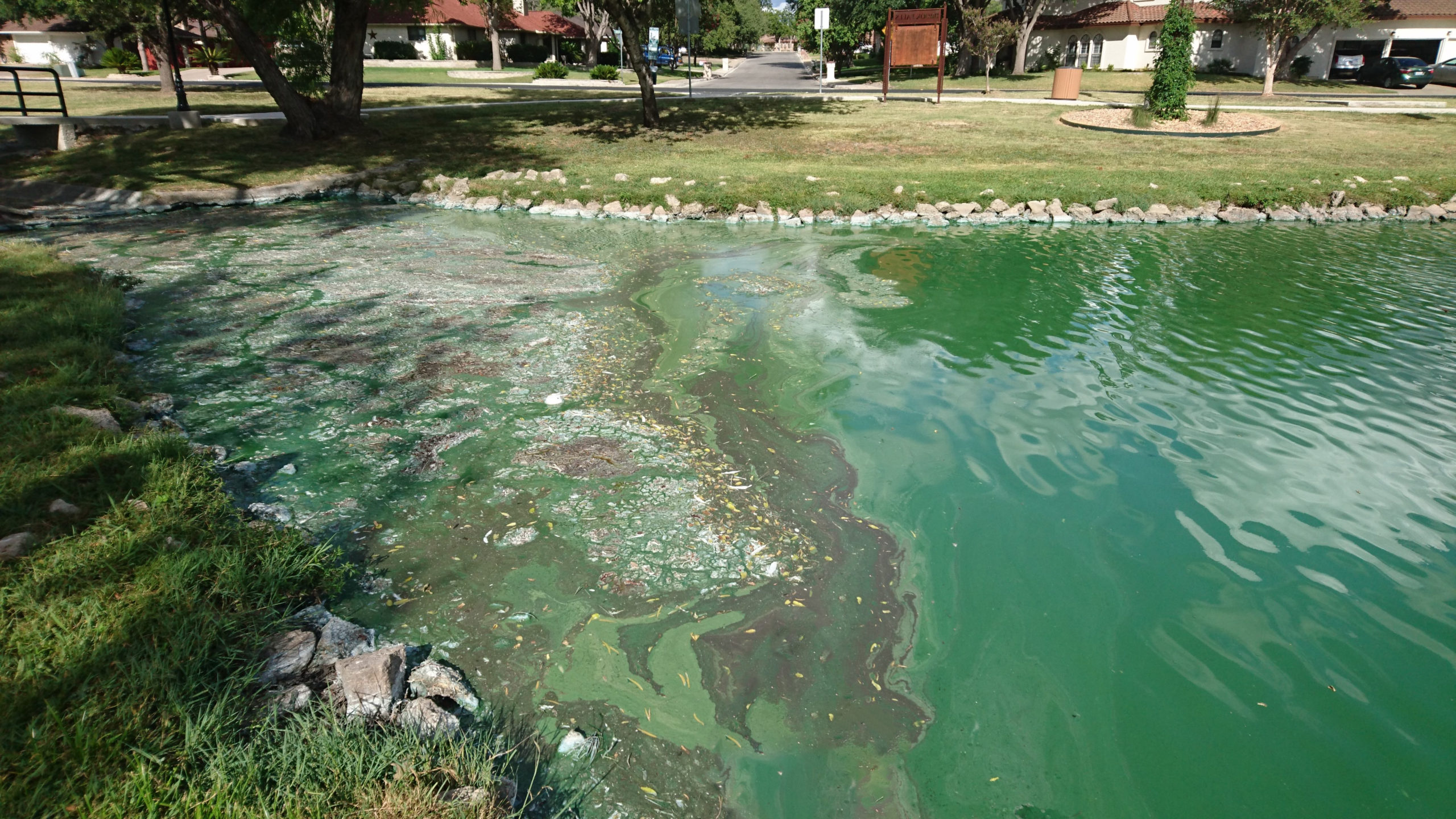Water clarity and color facts
- Water clarity is how cloudy the water is and is determined by how far downlight can penetrate through the water column.
- Watercolor is when light hits dissolved or suspended material in water, and certain wavelengths of light are reflected back out of the water, allowing us to see color.
- Dissolved or suspended material can be defined by whether the material can pass through a filter ranging between 0.5 – 2-micron filter. In general, material that is larger than 2 microns is suspended, and material less than 2 microns is dissolved.
Poor water clarity and color issues
- More thermal energy from the sun is absorbed, causing increased water temperatures. Warmer water means higher amounts of toxic ammonia and less oxygen availability.
- Reduced light penetration – reduces or inhibits the growth of aquatic plants and their ability to produce food and oxygen for species that depend on them.
- Reduced fish growth and increased fish stress, or even death from clogging of gills and digestive tracts and reduced feeding from not being able to see prey.
- Overall, reduced habitat and diversity of aquatic flora and fauna via poorer water quality.
Water Clarity and Color Parameters
Total Suspended Solids (TSS) are particles that are larger than 2 microns found in the water column. Anything smaller than 2 microns is generally considered dissolved. Suspended solids can be made up of both organic (i.e., phytoplankton) and inorganic particles (i.e., gravel, sand, silt, clay, etc.). Suspended solids in lakes can be from a variety of different sources, such as erosion, sediment disturbances, or excessive nutrients.
Color in water principally results from degradation processes in the natural environment (i.e., plant decay or sediment weathering). The most common causes of color in lakes are complex organic compounds originating from the decomposition of naturally occurring organic matter. However, colloidal forms of iron and manganese can be major causes of color in water. Lake water may

Turbidity is an optical determination of water clarity. Turbid water will appear cloudy, murky, or otherwise colored, affecting the physical look of the water. Suspended solids and dissolved colored material reduce water clarity by creating an opaque, hazy, or muddy appearance. Turbidity measurements are often used as an indicator of water quality based on clarity and estimated total suspended solids in water. Turbidity and total suspended solids refer to particles present in the water column. Turbidity and water clarity are both visual properties of water based on light scattering and attenuation. All three parameters are related to particles in the water column, whether directly or indirectly.
Algae represent suspended material and comprise turbidity. Algae also contain photosynthetic pigments that can affect a lakes apparent color. These pigments include chlorophyll, carotenoids (carotenes and xanthophylls), and phycobilins. Pigments are characteristics of certain algae groups as outlined in the watercolor table. Chlorophyll pigments are in all algae and are the primary method for quantifying the number of algae present in water.
